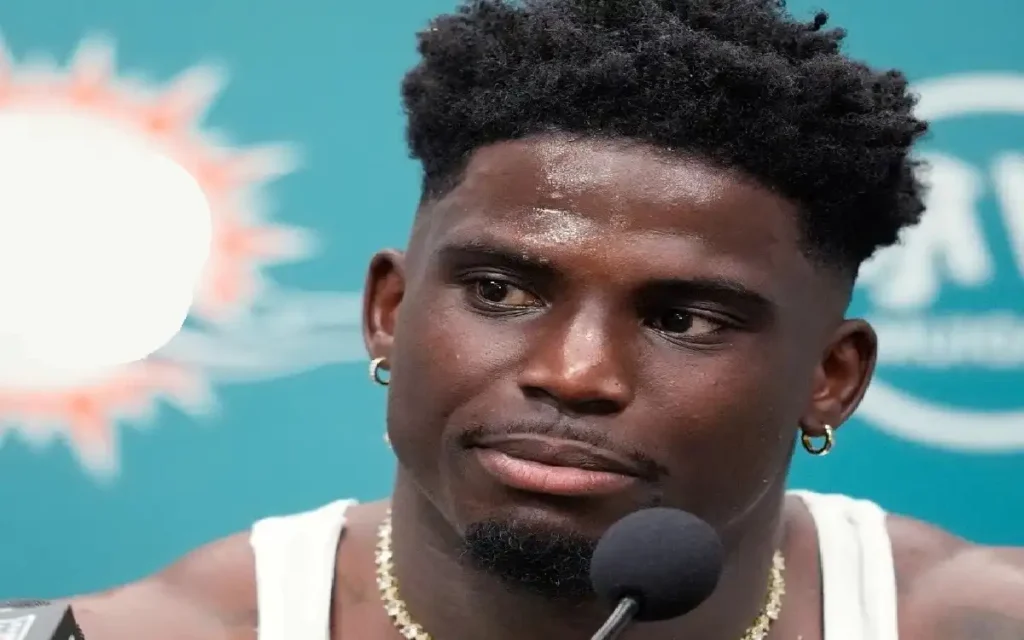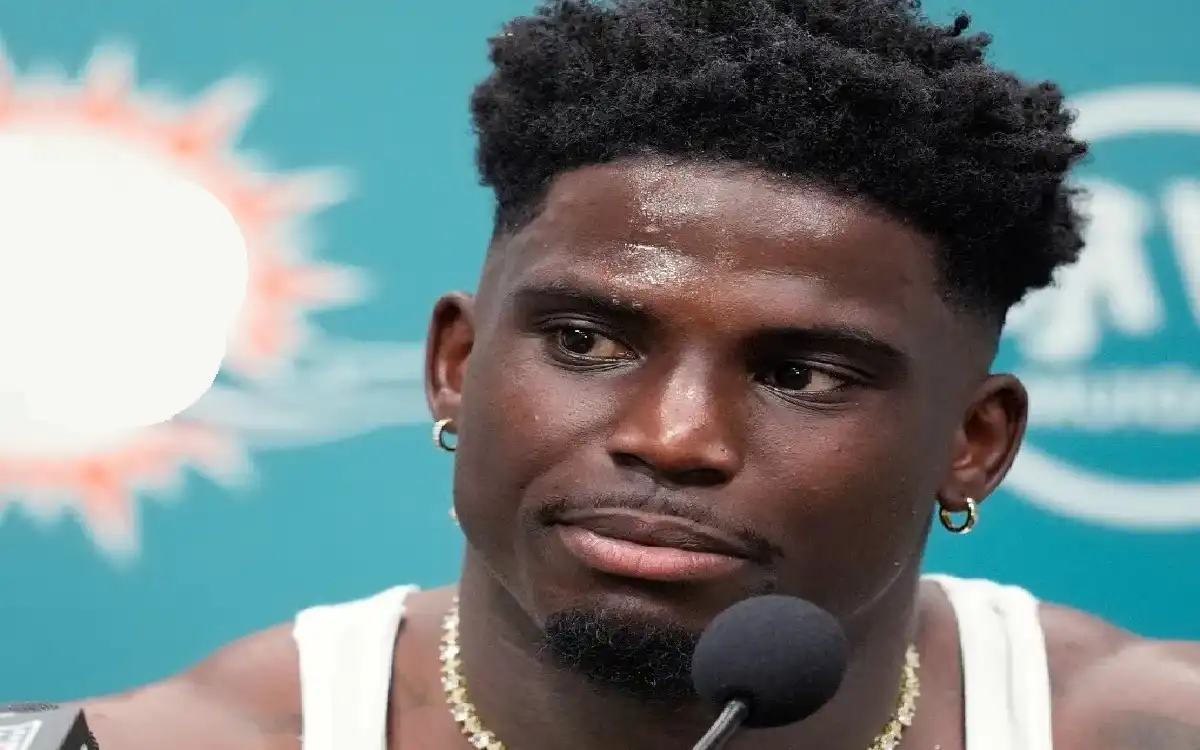Introduction
On September 8, 2024, just hours before the Miami Dolphins’ season opener against the Jacksonville Jaguars, star wide receiver Tyreek Hill found himself at the center of a controversial police incident.
What began as a routine traffic stop quickly escalated into a situation that would spark intense debate about police conduct, racial dynamics, and the treatment of high-profile athletes.
This information is about the details of the Tyreek Hill incident, its immediate aftermath, and the broader implications it holds for both the sports world and society at large.
Recent Released: Exploring the Concept of Juvgwg: A Complete Guide
The Incident Unfolds
Initial Traffic Stop
The events of that fateful day began when Tyreek Hill was pulled over near Hard Rock Stadium. According to reports, the Miami Dolphins wide receiver was cited for two infractions:
- Reckless driving
- Driving without a license
The officers involved claimed that Hill was speeding and not wearing a seatbelt, which prompted the initial stop. What should have been a routine interaction, however, quickly took a turn for the worse.
Escalation of the Situation
As the encounter progressed, Tyreek Hill initially complied with the officers’ requests, handing over his identification as required. However, the situation escalated when Hill rolled up his window after this initial compliance. This action appeared to trigger a forceful response from the officers present at the scene.
In a rapid sequence of events, police officers:
- Forcibly removed Hill from his vehicle
- Handcuffed him
- Placed him face down on the ground
This use of force has since been criticized by many as excessive, especially given the nature of the initial infractions.
Body Camera Footage
The release of body camera footage from the Miami-Dade Police Department provided a vivid and tense account of the moments leading up to Tyreek Hill’s detainment. The footage revealed:
- Hill’s initial compliance with the officers
- His subsequent reluctance to fully comply with all demands
- The rapid escalation of force by the officers
This visual evidence has played a crucial role in shaping public opinion about the incident and has become a focal point for discussions about police conduct.
Reactions and Responses

Hill’s Perspective
In the aftermath of the incident, Tyreek Hill expressed deep concern about the potential consequences had he not been a well-known athlete. He suggested that an ordinary citizen might have faced even more severe treatment, highlighting the broader implications of the encounter.
Tyreek Hill’s agent described the incident as both “heartbreaking” and “unjustified,” emphasizing that the player was simply trying to go to work when he was subjected to this treatment.
Teammate Involvement
The incident took on additional dimensions with the involvement of Hill’s teammates, notably Calais Campbell and Jonnu Smith. Their actions during and after the encounter demonstrated solidarity and raised further questions about the police response.
Calais Campbell’s Intervention
Calais Campbell, upon noticing Hill’s detainment, attempted to intervene:
- He approached the scene with his hands raised, maintaining a calm demeanor
- Despite his non-threatening approach, Campbell was handcuffed when he refused to leave the area
- He described one officer’s behavior as “irrational and erratic”
Jonnu Smith’s Support
Jonnu Smith also played a supportive role during the incident:
- He parked his vehicle nearby to offer support to Hill
- While maintaining distance, Smith was ultimately cited by police
Both Campbell and Smith later expressed their disbelief at the rapid escalation of the situation and emphasized their solidarity with their teammate.
Police Response and Internal Investigation
In the wake of the incident, the Miami-Dade Police Department took several actions:
- Placed one of the officers involved on administrative leave
- Initiated an internal investigation into the incident
Hill has since called for the termination of the officer placed on leave, citing disrespectful treatment towards him and his teammates during the encounter.
Impact on Hill’s Performance
Despite the tumultuous events leading up to the game, Tyreek Hill’s on-field performance remained remarkably unaffected. In the season opener against the Jacksonville Jaguars, Hill showcased his resilience and focus:
- Recorded 7 receptions for 130 yards
- Scored an impressive 80-yard touchdown
- Contributed significantly to the Dolphins’ 20-17 victory
Hill’s ability to compartmentalize the off-field incident and deliver a stellar performance speaks volumes about his mental fortitude and professionalism.
Public Reaction and Media Coverage
The release of the body camera footage sparked significant public reaction and intense media coverage. The incident touched on several sensitive issues:
Police Conduct Concerns
Many viewers expressed outrage over the aggressive tactics used by the officers:
- Critics noted the seemingly excessive force used on a cooperative individual
- Questions were raised about the necessity of forcibly removing Hill from his vehicle and placing him on the ground
Racial Dynamics
The incident reignited discussions about racial profiling and the treatment of Black individuals by law enforcement:
- Hill’s statement during the incident, “I’m just being a black man,” resonated deeply with many
- The interaction was seen by some as emblematic of broader challenges faced by people of color in similar situations
Support and Calls for Reform
In the wake of the incident, there was a groundswell of support for Tyreek Hill:
- Teammates and public figures voiced their support
- Calls for police reform and improved treatment during traffic stops intensified
- The Miami Dolphins organization released a statement acknowledging the need for proper conduct among law enforcement
Broader Implications
The Tyreek Hill incident has far-reaching implications that extend beyond the realm of sports:
Police-Community Relations
The incident has reignited debates about:
- The use of force during routine traffic stops
- The need for de-escalation training for law enforcement officers
- The importance of building trust between police and communities of color
Athlete Activism
Hill’s experience and subsequent comments have:
- Highlighted the role of high-profile athletes in discussions about social justice
- Demonstrated the power of sports figures to bring attention to broader societal issues
Transparency and Accountability
The release and analysis of body camera footage underscore:
- The importance of transparency in police interactions
- The role of technology in holding law enforcement accountable
- The need for clear policies regarding the release of such footage
A Comparative Look: Traffic Stop Outcomes
To provide context for the Hill incident, let’s examine a comparison of traffic stop outcomes based on race:
| Race/Ethnicity | Likelihood of Being Stopped | Likelihood of Search | Likelihood of Arrest |
| Black | 20% higher than white | 2x higher than white | 3x higher than white |
| Hispanic | 10% higher than white | 1.5x higher than white | 2x higher than white |
| White | Baseline | Baseline | Baseline |
| Asian | 10% lower than white | 0.5x lower than white | 0.5x lower than white |
Note: Data is representative and based on national averages from various studies. Actual figures may vary by region and specific circumstances.
This table illustrates the disparities in traffic stop outcomes across different racial and ethnic groups, providing a broader context for understanding incidents like the one involving Tyreek Hill.
At Last
The Tyreek Hill incident serves as a stark reminder of the complex interplay between law enforcement, race, and celebrity in modern America. While Hill’s status as a high-profile athlete brought significant attention to this encounter, it also highlights the experiences of countless individuals who face similar situations without the benefit of public scrutiny.
As discussions continue and investigations unfold, this incident has the potential to serve as a catalyst for meaningful change. It underscores the need for continued dialogue, policy reform, and a commitment to building trust between law enforcement and the communities they serve.
Ultimately, the true measure of progress will be seen in how such incidents are prevented in the future, rather than merely addressed after the fact. As society grapples with these challenging issues, the hope remains that incidents like these will become increasingly rare, paving the way for a more just and equitable system for all.
